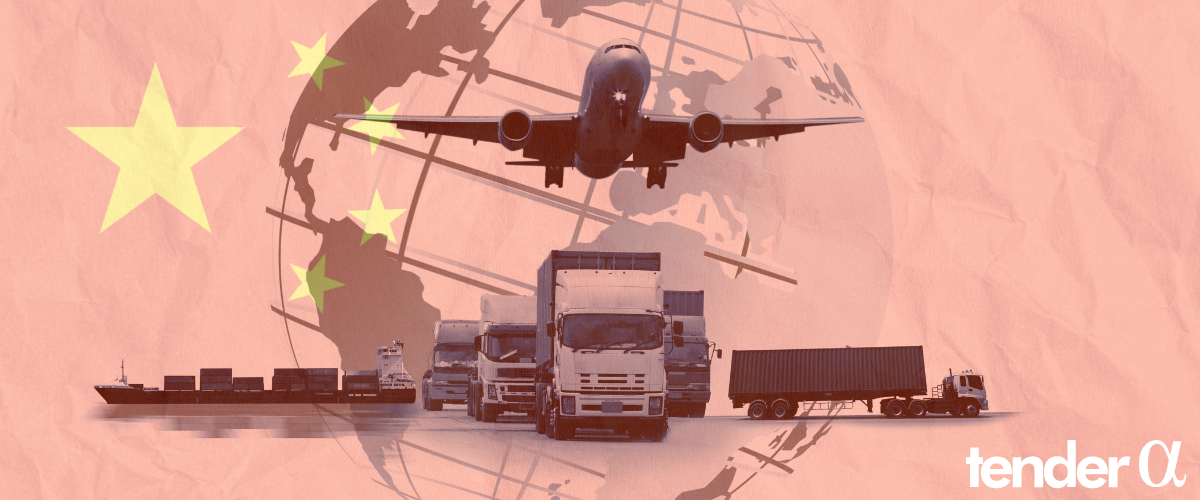Have you ever considered what opportunities would open up for you if you could gain rare insights into the economic activities of the world’s second largest economy?
If you haven’t, now is the time to start thinking about the benefits of delving into Chinese data.
Chinese government contract awards data and supply chain transactions data are unique, yet underexplored, sources of information.
The intelligence they contain provides insights into the priorities of the Chinese government, while also identifying potential vulnerabilities and supply chain risks for government agencies.
The data reveals the country’s closest trade partners and unearths import trends and detailed trade activity.
The government contracts data serves as a platform upon which data from a number of other sources is added to create the end Government Supply Chain Data Feed.
The other sources include customs data (bill of lading, shipping and transit data) and company filings (annual reports, SEC filings, press releases, investor presentations).
What Stories Does the Data Tell?
Among the insights provided by the Chinese supply chain data, is the types of commodities that are most widely imported into China and trends associated with the movement of goods into the country.
Imagine that you notice an increase in the import of semiconductors. This could signify an attempt by the Chinese government to future-proof its activities and guarantee its reserves of semiconductors.
This has actually happened this past summer when China’s imports of semiconductor equipment rose to record high. In June and July, it totalled nearly $5bn, up 70% from $2.9bn in the same period last year.
The trend continued in October when the value of semiconductor equipment imports increased by nearly 80% from a year earlier.
Additionally, as we mentioned earlier, the data contains information about the countries from which China imports goods.
Going back to the example with the semiconductors, you can evaluate the robustness of China’s supply chain by examining the trade flows volumes from other countries.
A decrease in the transactions from a traditional supplying country could be indicative of a supply chain disruption.
For example, the latest US tech trade controls are viewed as the reason for China’s stockpiling of semiconductor equipment. This may result in an increase in imports from other countries.
This has been the case with the growth of imports from the Netherlands in the past few months. Data shows that China’s imports of equipment for lithography jumped sixfold as of late, noting a shift in trade partnerships.
How Does Politics Impact Supply Chain?
Another reason for you to monitor supply chain data is that supply chain dynamics can be extremely volatile due to major political decisions.
A recent real-world example emphasizes this, especially when we talk about trade agreements with countries that are strategic geopolitical and economic competitors, as is the case with China.
In early December, the Biden administration proposed new rules aimed at shifting more production of electric vehicle batteries and the materials that power them to the United States.
Currently, this industry is dominated by China, but it seems that the US has aspirations to get back some control. The US electric vehicle market is growing rapidly - battery-powered vehicles made up about 8 percent of new cars sold in the third quarter.
Still, China produces about two-thirds of the world’s battery cells, and refines most of the minerals that are key to powering an electric vehicle.
Implementing the proposition could encourage shifts in automotive supply chains, which continue to rely heavily on China for materials and components of electric vehicles.
The rules are meant to limit the role that firms in China can play in supplying materials for electric vehicles that qualify for federal tax credits.
They will also discourage companies that seek federal funding to build battery factories in the US from sourcing materials from China or Russia.
Whilst this is still only a proposition that may never go on to be realized, it gives a good idea of how a political decision of this kind can cause major challenges (and opportunities) for supply chains.
Chinese government contracts data and government supply chain data provide deep, valuable insights into the country’s economic undertakings.
The data allows you to analyze various industries, single out market players who have established themselves as frequent government suppliers, and monitor the movement of goods into China and the economic implications of this trade.
Never miss a key activity by the Chinese government - get in touch now for a free demo of our data.
